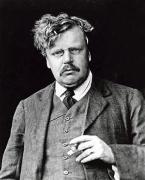I am not part of the collective wisdom here, I'm just a dude who likes revolvers. But for my money a perfect revolver book would complement the one that feudist designed but be very differently focused. I'd love to see something that gives a comprehensive treatment of the various options for revolver use, with a thorough accounting of pros and cons, both from a concealed carry standpoint and a competitive one.
So, for example, I really like Cunningham's chapter on reloads, where he does a detailed account for the rationale behind his universal reload (most people I've seen online don't fully present the universal reload, including Chris Baker. No disrespect intended, but at about :52 he describes opening and turning the revolver very differently from the way Cunningham does in GDBook of the Revolver. Most people gloss over Cunningham's methodology of working the various cylinder releases, and for Cunningham the universality of the universal reload is a key factor in its favor. Of course, it wouldn't work with a Korth or a new Bodyguard style revolver, but whatever. And the turning of the hands gets a particular sort of treatment in Cunningham, too, that I haven't seen elsewhere. Sorry for the long parenthetical) and gives a great breakdown of it pictorially. But I'd love to see a chapter that presents that one, Stressfire, the Ohio/Taylor reload, and several others, and walks you through the thought processes behind each, presents the reloads fully faithfully to the way they're taught by their inventors (and maybe also presents whatever minor improvements people have made to them), gives real-world discussions of the shortcomings or failure points, and maybe gives some solid comparative times results. (Not just "this one will save you a quarter of a second" or whatever, but actual results.)
I'm also interested in certain details that tend to get dropped in these discussions. For example, Ayoob stresses the proper way to hold a speedloader, by having your fingers out over the edge so you can feel the cylinder ahead of the loader. I have a couple of speedloader pouches that sort of work for concealment, and neither allows a grip on the loader like Ayoob describes, unless I take the time to shift my grip after getting it out of the pouch. In a concealed carry situation, how would the best revolver trainers suggest handling loaders?
Need chapters on lefty, one-handed, malfunctions, and so on. Also, thorough chapters on gear, especially concealed gear. These will of course get outdated fast and I can see why an author wouldn't want to put much effort into that. Anyway, this would lead to a very long book, and it would no doubt be TMI for many people, but I love the nitpicky stuff and I've never seen a detailed discussion. I'm kind of looking for a 600-page version of The Gun Digest Book of the Revolver.





 Reply With Quote
Reply With Quote





